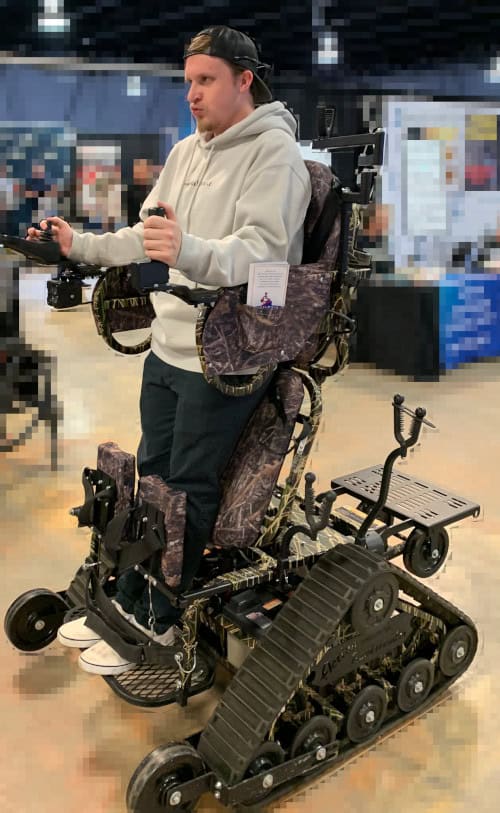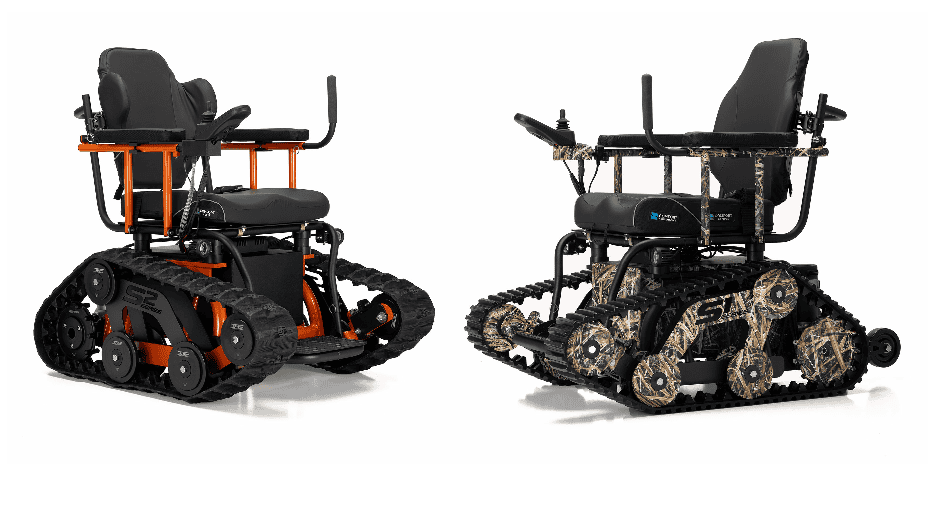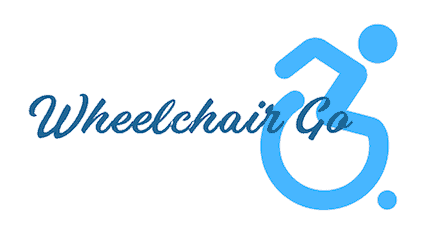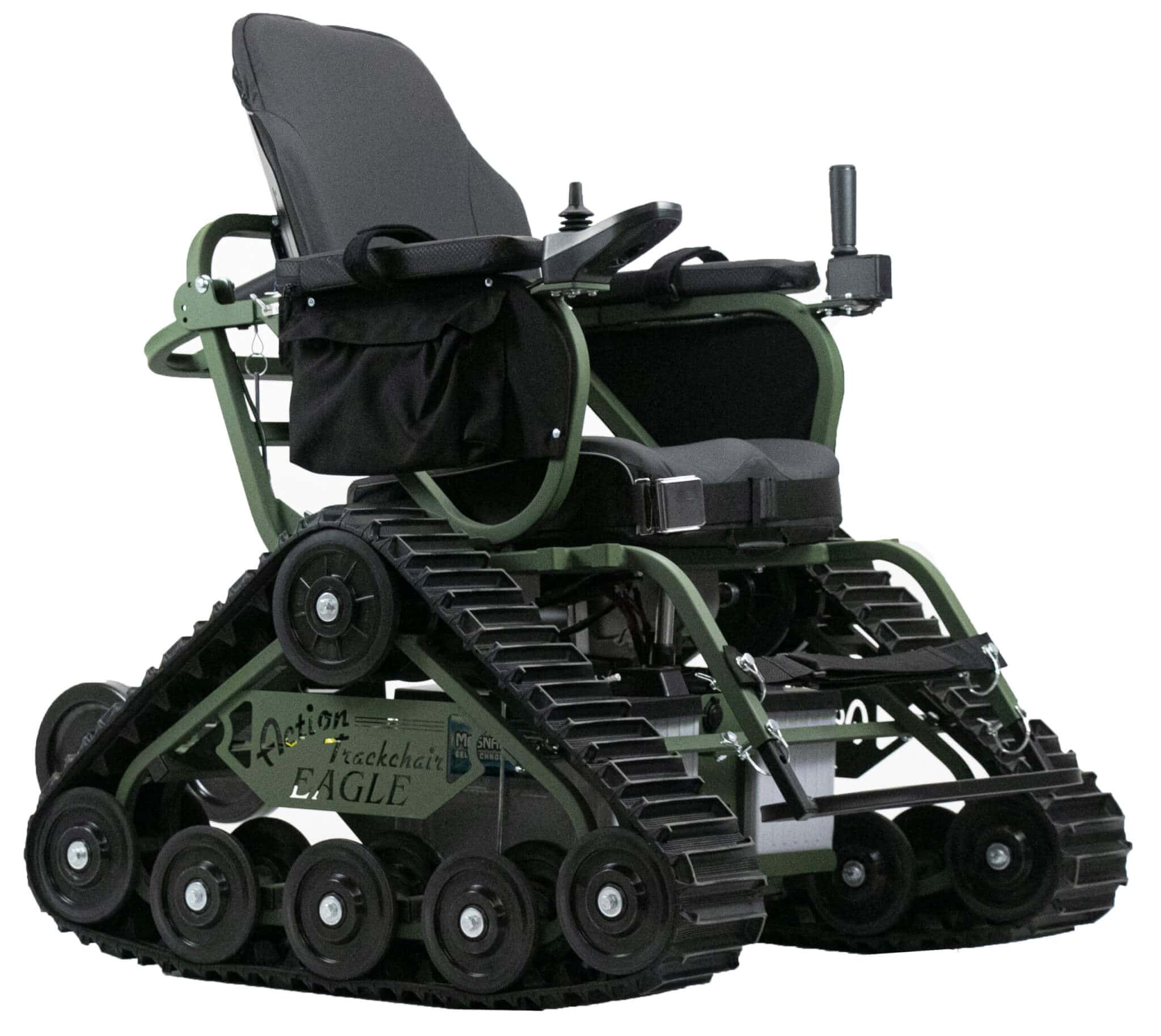Imagine wanting to enjoy a simple walk in the park, but the uneven trails feel like an insurmountable mountain. Or picturing a day at the beach, only to be stopped by the soft, sinking sand. For many individuals with mobility impairments, these everyday scenarios are a constant reminder of limitations. But what if there was a way to conquer those obstacles? Enter the power wheelchair with tracks, a revolutionary mobility device designed to tackle the toughest terrains. These tracked power wheelchairs are gaining attention because they offer a potential solution to a very real problem: how to navigate a world that isn’t always smooth and paved.
Essentially, they replace traditional wheels with tank-like tracks, providing superior traction and stability. While power wheelchairs with tracks offer unparalleled off-road capabilities, understanding their benefits and drawbacks is crucial for informed decision-making. This article will explore the ins and outs of this innovative technology, helping you determine if a tracked power wheelchair is the right choice for your needs.
What is a Power Wheelchair with Tracks?
Power wheelchairs with tracks represent a significant advancement in mobility technology, designed to overcome the limitations of traditional wheeled wheelchairs. These innovative devices, often referred to as an “all-terrain wheelchair” or an “off-road mobility device,” are engineered to provide enhanced stability and traction in challenging environments. Understanding the core components and design philosophy behind these tracked mobility vehicles is essential for anyone considering this type of adaptive technology.
Tracked System vs. Traditional Wheels:
The fundamental difference lies in the method of propulsion. Traditional power wheelchairs rely on wheels, which can struggle on uneven or soft surfaces. In contrast, a power wheelchair with tracks utilizes a continuous loop of durable material, similar to a tank or bulldozer. This design distributes the user’s weight over a larger surface area, significantly improving traction and reducing the risk of sinking or getting stuck. This makes them ideal for navigating environments where standard wheels would falter.
Track Materials:
The tracks themselves are crafted from robust materials designed to withstand harsh conditions. Rubber tracks are the most common, offering a balance of durability, flexibility, and grip. Some manufacturers utilize specialized composite materials that provide even greater resistance to wear and tear. These materials are engineered to handle varying temperatures and terrains, ensuring reliable performance in diverse climates.
Motor and Drive System:
To power the tracked system, these wheelchairs employ powerful motors and drive systems. The motors are designed to deliver high torque, enabling the chair to climb steep inclines and navigate obstacles. The drive system is often more complex than that of a standard wheeled wheelchair, incorporating advanced controls to manage the independent movement of each track. This allows for precise maneuvering and enhanced stability on rough terrain.
Brands and Manufacturers:
Several manufacturers specialize in producing high-quality tracked power wheelchairs. Action Trackchair and TrackMaster are among the prominent brands. These companies invest heavily in research and development, continuously improving their designs and incorporating the latest technologies. Exploring these brands can provide potential users with a starting point for their research.
Overcome Obstacles and Traverse Challenging Environments:
The core design intent of a power wheelchair with tracks is to empower individuals with mobility impairments to access environments that would otherwise be inaccessible. These chairs are built to tackle obstacles such as curbs, steps, and uneven ground, enabling users to explore nature trails, beaches, and other outdoor settings. This focus on overcoming obstacles and expanding accessibility is what sets these “rugged wheelchairs” apart.
Benefits of Using a Tracked Power Wheelchair
Power wheelchairs equipped with tracks revolutionize mobility for individuals who refuse to be confined by challenging terrains. These all-terrain wheelchairs offer a host of advantages, significantly expanding the possibilities for independence and outdoor exploration. From superior navigation across rough landscapes to the sheer durability of their design, these tracked mobility vehicles are transforming lives.
Superior Terrain Navigation:
The most significant advantage of a power wheelchair with tracks lies in its unparalleled ability to navigate challenging terrains. Unlike traditional wheeled wheelchairs, tracked systems distribute weight evenly, providing exceptional traction and stability. This allows users to confidently traverse uneven ground such as gravel paths, dirt trails, and grassy fields. Inclines and declines that would be impassable for standard wheelchairs become manageable, thanks to the continuous grip of the tracks. Furthermore, these rugged wheelchairs excel in soft ground conditions, effortlessly gliding over snow, sand, and even mud. This enhanced ability to handle diverse environments opens up access to previously inaccessible locations, such as hiking trails, beaches, and rural areas, making it a true off-road mobility device.
- Uneven Ground (Gravel, Dirt, Grass): The wide contact area of the tracks ensures that the wheelchair doesn’t sink or get caught in loose surfaces. This allows for smooth and stable movement across gravel, dirt trails, and grassy fields, providing a more comfortable and secure ride.
- Inclines and Declines: The continuous traction offered by the tracks enables the wheelchair to maintain a firm grip on slopes, preventing slippage and ensuring safe ascent and descent, even on steep inclines.
- Snow and Sand: Traditional wheels often struggle in soft, yielding surfaces like snow and sand, but tracks distribute weight effectively, preventing the wheelchair from sinking. This allows users to navigate these challenging terrains with greater ease and confidence.
- Mud and Other Soft Ground: The broad, continuous contact of the tracks allows the user to traverse muddy and other soft ground conditions. The tracks essentially float on the surface, preventing sinking and maintaining momentum.
- Enhanced Stability and Traction: The design of the track system inherently provides superior stability and traction, allowing the user to feel more secure and in control when navigating rough or uneven surfaces.
- Environments Where It Excels: These chairs excel in environments where standard wheel chairs fail. Imagine accessing remote fishing spots, exploring nature trails, or simply navigating the uneven terrain of a rural property. These all-terrain capabilities make these tracked wheelchairs ideal for outdoor enthusiasts and those living in areas with challenging landscapes.

Increased Independence and Freedom:
A power wheelchair with tracks provides more than just physical mobility; it offers a profound sense of independence and freedom. By expanding access to previously unreachable locations, users can participate in activities they once thought were impossible. This newfound mobility translates into an improved quality of life, fostering a sense of adventure and enabling participation in outdoor activities that contribute to overall well-being. The psychological benefits of this enhanced mobility are significant, reducing feelings of isolation and empowering individuals to live life to the fullest.
- Expanding Access to Previously Inaccessible Locations: These tracked chairs open up a world of possibilities, allowing individuals to explore nature trails, beaches, and other outdoor environments that were previously off-limits to them.
- Improved Quality of Life Through Outdoor Activities: Engaging in outdoor activities has numerous physical and mental health benefits. Tracked power chairs make it possible for users to enjoy these activities, leading to a more fulfilling and active lifestyle.
- Psychological Benefits of Greater Mobility: The ability to move freely and independently can have a profound impact on a person’s mental health. It can reduce feelings of isolation, boost self-esteem, and promote a sense of empowerment.
Durability and Robustness:
Power wheelchairs with tracks are built to withstand the rigors of off-road use. Their reinforced frames and components are designed to handle the stresses of rough terrain, ensuring long-lasting performance. The track systems themselves are constructed from durable materials, such as rubber tracks or specialized composites, which are resistant to wear and tear. This robust design significantly reduces the risk of damage compared to wheeled wheelchairs in challenging environments, providing a reliable and durable mobility solution.
- Reinforced Frame and Components: The frames of tracked power chairs are typically made from heavy-duty materials, such as steel or aluminum, to provide maximum strength and durability.
- Long-Lasting Track Systems: The tracks themselves are designed to withstand the wear and tear of off-road use. They are typically made from durable materials, such as rubber or polyurethane, and are designed to provide a long service life.
- Reduced Risk of Damage Compared to Wheeled Wheelchairs in Rough Environments: The robust design of tracked power chairs makes them less susceptible to damage from impacts and vibrations, which can be a common problem for wheeled wheelchairs in rough terrain.
Drawbacks of Using a Power Wheelchair with Tracks
While the allure of an all-terrain wheelchair with tracks is undeniable, it’s essential to acknowledge the practical limitations that accompany this robust design. These drawbacks often stem from the very features that enable off-road prowess, impacting everyday usability in ways that potential users must carefully consider.
Reduced Maneuverability Indoors:
The wider turning radius of a tracked power wheelchair is a direct consequence of its track system. Unlike traditional wheeled chairs that can pivot on a dime, tracked models require more space to execute turns. This can lead to difficulties navigating tight hallways, doorways, and small rooms within homes and public buildings. Furthermore, the aggressive nature of the tracks can pose a risk of damage to delicate flooring materials like hardwood or tile. This “indoor mobility limitations” can be a significant factor for individuals who spend a considerable amount of time within confined spaces.
Increased Size and Weight:
The robust construction and track system of these off-road mobility devices inevitably result in increased size and weight compared to standard power wheelchairs. This presents challenges for transportation, as many standard vehicle lifts or ramps may not be compatible. Fitting these larger chairs into standard vehicles, even larger SUVs or vans, can be problematic. The higher weight also becomes a concern when needing to transport the chair manually, such as lifting it into a vehicle or navigating steps where ramps are unavailable. These “transportation challenges” are a significant factor to be considered.
Higher Cost:
The advanced engineering and specialized components of a tracked power wheelchair contribute to a significantly higher price tag compared to traditional power wheelchairs. The initial purchase cost is just the beginning; maintenance and repair expenses can also be substantial due to the complexity of the track system and specialized parts. Additionally, insurance coverage for these specialized chairs may be more complex or costly. The overall “cost of ownership” must be carefully evaluated.
Limited Speed and Range:
The trade-off for the increased power needed to traverse challenging terrain is often a reduction in speed and range. The powerful motors that drive the tracks consume more battery power, resulting in a shorter travel distance on a single charge. This is particularly noticeable when navigating inclines or soft ground. Furthermore, the top speed of tracked wheelchairs is generally lower than that of standard power wheelchairs. These “operational limitations” must be carefully considered by individuals who require long-distance travel or need to maintain a certain pace.
Noise and Vibration:
The track system, by its very nature, generates more noise and vibration than traditional wheels. The continuous movement of the tracks over surfaces creates a distinct sound that can be noticeable, especially in quiet environments. Additionally, the vibration levels experienced by the user can be higher, potentially leading to discomfort or fatigue over extended periods. This increased noise and vibration can be a significant factor for those who are sensitive to sensory input.

Who is a Power Wheelchair with Tracks Suitable For?
Power wheelchairs with tracks represent a significant investment and a specialized mobility solution. Therefore, understanding who can truly benefit from this type of off-road mobility device is crucial. It’s not just about wanting to tackle rough terrain; it’s about aligning the wheelchair’s capabilities with specific needs and lifestyles.
- Individuals with specific mobility needs and lifestyles:
- Those living in rural or challenging environments: For individuals residing in areas with unpaved roads, uneven terrain, or frequent exposure to elements like snow and mud, a tracked mobility vehicle offers a distinct advantage. Traditional wheeled power chairs can struggle, or even become unusable, in these conditions. The robust track system allows for consistent and reliable mobility, enabling daily tasks and outdoor activities that would otherwise be difficult or impossible.
- Outdoor enthusiasts and adventurers: Those who enjoy activities like hiking, fishing, or hunting in natural settings often find that a power wheelchair with tracks opens up new possibilities. The ability to navigate trails, beaches, and forested areas significantly enhances their ability to participate in their favorite hobbies. This type of all-terrain wheelchair transforms outdoor experiences, granting access to places that were previously off-limits.
- Individuals requiring robust and durable mobility solutions: Some individuals need a wheelchair that can withstand heavy use and challenging conditions. The reinforced frame and durable track system of these chairs provide a level of robustness that standard power wheelchairs cannot match. For those who frequently encounter rough terrain or require a chair for daily use in demanding environments, a tracked model offers superior longevity and reliability.
- Medical conditions that benefit from this type of chair: Certain medical conditions can significantly impact mobility and make navigating uneven terrain particularly challenging. Individuals with conditions like Multiple Sclerosis (MS), Spinal Cord Injuries, or Muscular Dystrophy may find that the stability and traction offered by a tracked wheelchair greatly improve their ability to move around safely and independently. The ability to handle diverse terrains can also contribute to a higher quality of life by allowing for participation in more outdoor activities, which can have both physical and psychological benefits.
- Considerations for individual needs and preferences: Ultimately, the suitability of a power wheelchair with tracks depends on individual needs and preferences. Factors such as the frequency of outdoor use, the type of terrain encountered, and the individual’s lifestyle play a significant role. It’s essential to carefully assess these factors and consider whether the benefits of a tracked wheelchair outweigh the potential drawbacks. For example, if most of the user’s time is spent indoors, the reduced maneuverability of a tracked model might be a significant concern. Conversely, if the user frequently travels to outdoor locations, the enhanced terrain capabilities could be invaluable.
When discussing the suitability, it’s helpful to consider specific examples. For individuals with Spinal Cord Injuries, a tracked wheelchair can provide the freedom to explore nature trails that were previously inaccessible. For those with MS, the stability and traction can enhance safety and confidence when navigating uneven surfaces. Moreover, outdoor activities like hunting and fishing can be made more accessible with the enhanced mobility that a tracked chair provides.

Making an Informed Decision: Factors to Consider
Choosing a power wheelchair with tracks is a significant decision that requires careful consideration. Unlike standard power wheelchairs, these off-road mobility devices are designed for specialized use, and their unique characteristics necessitate a thorough evaluation. To ensure you select the right tracked mobility vehicle for your needs, it’s essential to weigh various factors, from your personal requirements to the practical aspects of ownership.
Assessment of Individual Needs and Priorities:
Before anything else, conduct a comprehensive assessment of your lifestyle and mobility requirements. Consider the types of environments you frequently navigate. If you primarily spend time indoors or in urban settings with smooth surfaces, a tracked wheelchair might be overkill. However, if you yearn for outdoor adventures on hiking trails, beaches, or rural areas, the all-terrain capability of a tracked chair becomes invaluable. Determine your priorities: is it primarily about conquering rough terrain, or is indoor maneuverability more crucial? Understanding your specific needs will guide your selection process.
Trial and Testing of Different Models:
Don’t purchase a power wheelchair with tracks without first trying it out. Schedule demonstrations and test drives with different models and manufacturers. Experience firsthand how each chair handles various terrains and obstacles. Pay attention to the chair’s responsiveness, comfort, and ease of use. If possible, test the chair in environments similar to those you plan to frequent. This hands-on experience will provide valuable insights into the chair’s performance and suitability for your needs.
Consultation with Healthcare Professionals and Mobility Specialists:
Seek advice from healthcare professionals, such as physicians and physical therapists, who understand your medical condition and mobility limitations. They can provide valuable recommendations based on your specific needs and help you assess whether a tracked wheelchair is appropriate. Mobility specialists, who are experts in adaptive technology, can also offer guidance on selecting the right model and customizing it to meet your requirements. Their expertise ensures that you choose a chair that maximizes your comfort and functionality.
Evaluation of Cost, Maintenance, and Support Services:
The cost of a power wheelchair with tracks is typically higher than that of standard power wheelchairs. Factor in the initial purchase price, as well as ongoing maintenance and repair expenses. Research the availability of support services, such as technical assistance and warranty coverage. Inquire about the cost and availability of replacement tracks and other components. Consider insurance coverage and whether your policy will cover the cost of a tracked wheelchair. A comprehensive evaluation of the financial aspects will help you make an informed decision and avoid unexpected expenses.
Consideration of the Terrain that the Chair will be Used on the Majority of the Time:
Finally, consider the primary terrain where you’ll be using the chair. If you need to navigate through deep mud, snow, or sand, ensure that the chair’s tracks and motor system are designed for those specific conditions. If your terrain is mostly uneven ground and gravel, a less specialized tracked wheelchair might suffice. Understanding the terrain you’ll encounter most often will help you select a chair with the appropriate capabilities and features.
Some Final Thoughts…
In essence, the power wheelchair with tracks represents a significant leap forward in mobility technology, offering unparalleled access to previously inaccessible terrains. While drawbacks like indoor maneuverability, size, cost, and operational limitations exist, the benefits of enhanced terrain navigation, increased independence, and robust durability are undeniable. Ultimately, the decision hinges on your individual needs and lifestyle. If you yearn for the freedom to explore the outdoors, navigate challenging environments, and reclaim a sense of limitless adventure, then a tracked power wheelchair could be a transformative investment.
We urge you to carefully assess your priorities, trial different models, and consult with professionals to make an informed choice. By embracing this technology, you can unlock new possibilities and redefine what’s achievable. Remember, the future of mobility is about empowering individuals to live life without boundaries, and tracked power wheelchairs are paving the way.
Some Other Questions that People Also Ask
- What is the best power wheelchair with tracks for off-road use?
- The “best” depends on individual needs and terrain. Factors include track type, motor power, battery capacity, and specific features. Researching specific models from reputable manufacturers and reading user reviews is essential.
- How much does a power wheelchair with tracks cost?
- These wheelchairs are generally more expensive than standard power wheelchairs, ranging from tens of thousands of dollars. The exact price varies based on features, brand, and customization.
- Are power wheelchairs with tracks suitable for indoor use?
- While possible, they are less ideal for indoor use due to their larger size, wider turning radius, and potential to damage flooring.
- What are the limitations of a tracked power wheelchair?
- Limitations include reduced indoor maneuverability, increased size and weight, higher cost, potentially lower speed and range, and increased noise and vibration.
- Can a tracked power wheelchair climb stairs?
- Most tracked power wheelchairs are designed for uneven terrain, not stairs. Some specialized models might handle very low steps, but generally, they are not designed for standard staircases.
- How far can a tracked power wheelchair travel on a single charge?
- The range varies depending on battery capacity, terrain, and user weight. It can range from several miles to over ten miles, but challenging terrain will reduce the range.
- Are there rental options for tracked power wheelchairs?
- Rental options are less common than for standard power wheelchairs, but some specialized mobility equipment providers may offer them. Researching local medical equipment suppliers is recommended.
- What is the maintenance like for a tracked power wheelchair?
- Maintenance involves regular cleaning, track inspection, battery care, and periodic professional servicing. It’s generally more involved than maintenance for standard power wheelchairs.
- How do tracked wheelchairs handle snow and ice?
- Tracked wheelchairs generally handle snow and ice better than wheeled wheelchairs due to their increased traction. However, extreme conditions may still pose challenges.
- What are the differences between wheeled and tracked power wheelchairs?
- Wheeled power wheelchairs are designed for smooth, indoor and outdoor surfaces, while tracked wheelchairs are designed for rugged, off-road terrain. Tracked wheelchairs offer superior traction and stability in challenging environments but are less maneuverable indoors.

